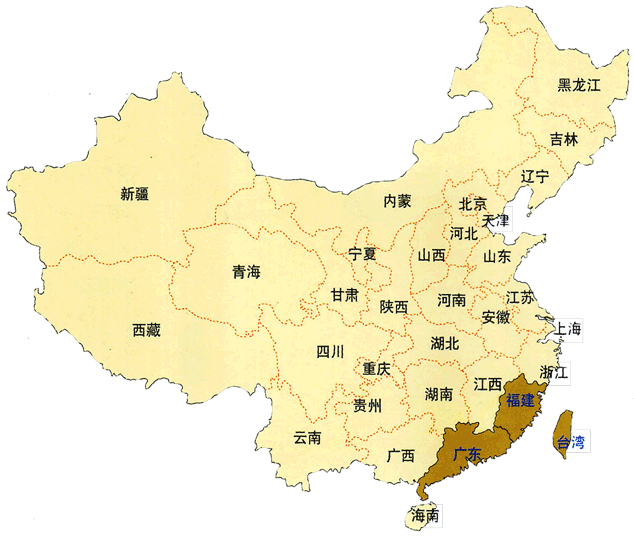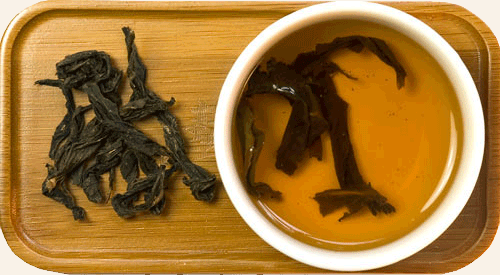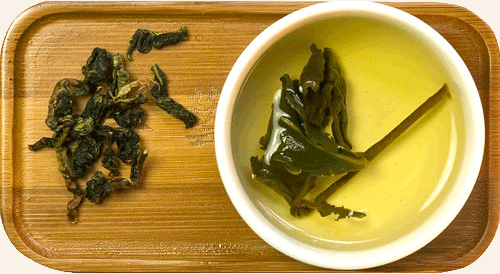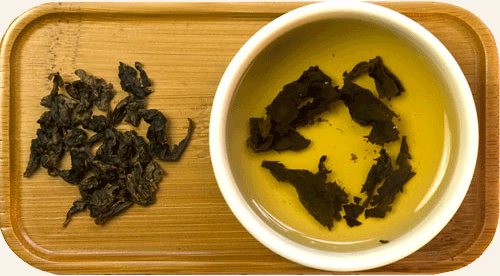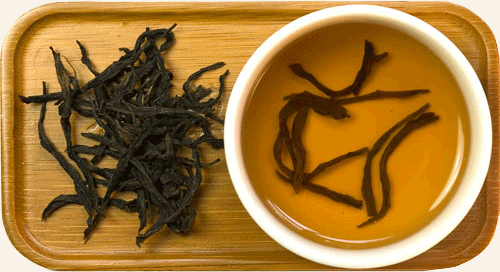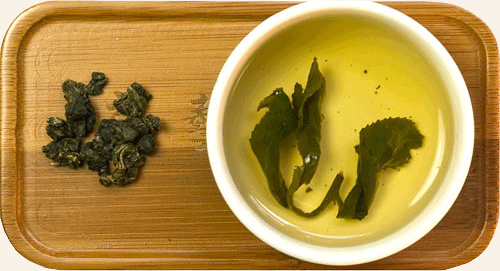The map shows that Oolongs grow at quite compact territory despite of four separate regions distinguished as areas of their cultivation. Although these locations from the ancient times were known for tea growing the technology of Oolong production was elaborated only in 16–17 centuries. Oolongs vary considerably each featuring specific processing techniques, however joint by a single production principle. Now let us acquaint ourselves with examples from each region.
Also known as: Wuyi Oolongs, Rock Oolongs, Yancha and many others more specific namings.
This region offers plenty of teas very similar to each other and processed using the same technology: Da Hong Pao, Water Golden Turtle, Cinnamon, Daffodil etc. They are commonly named Da Hong Pao (Big Red Robe). This is both the name of the separate tea type and the brand name of the tea originating from this region. Basically every tea from Wuyi Mountains may be sold as Da Hong Pao but in specialized shops committed to the Chinese tea culture tea types will be distinguished. Most probably this region is the ancestor of all Oolongs.
Specific features. The flush of a good leaf is performed in the middle of May than followed by several weeks of production and roasting of Oolong. The leaf is twisted a little but retains the form of the «ribbon». Tea leaves are big, dark-brown or even black in color. The brew gains cognac color, strong «as a rock» taste and in most cases savors of the floral scent.
By color and strength the brew resembles European black tea. Wuyishan was one of the first regions actively trading tea with Europe and it were North Fujian teas that began acquaintance of the Europeans with the «dark» tea. Chinese say that the name of the whole domain of black teas has acquired its name from Oolons. Oolon translates as «black dragon» therefore the merchants have started to shorten names of all dark teas to «black».
Although several Oolongs are cultivated in this location, the region is famous for Tie Guan Yin which name translates as «Iron Bodhisattva Guan Yin» or «Iron Goddess of Mercy». The word «iron» in its name is not accidental. Tea leaves are harsh and heavy as iron. Tea processing procedure customary in the region includes tight rolling of leaves into balls, nevertheless the harshness of the leaf makes Tie Guan Yin balls the least firm. The tea is easy to recognize by its infirmly rolled leaves.
Traditionally Tie Guan Yin was heavily roasted, it was characterized by dark brew and deep velvety taste. However in recent years there is a trend for the light roasting of the leaf which preserves the astringency of the green tea while giving bright floral aroma. Therefore the market offers both lightly roasted and traditional Tie Guan Yin. However this tea is produced in such an abundance and processed in so many ways, that its variety available at the market is vast. Besides while the specialized shops provide information on the types of processing and other features of the tea, regular traders sale it under the general brand name of «Tie Guan Yin».
Guangdong province produces only one type of Oolong — Lonely Bushes from the Mountain of Phoenix. This tea is known from the ancient times of Song Dynasty (10–13 century). Tea leaves in this area are very aromatic with at least 10 different distinguished aromas. Therefore each Lonely Bushes tea should in principle come with the indication of its aroma. Here the tea leaf in the process of production is being twisted while retained in the form of a «ribbon». Roasting of the leaf is light. The tea has bright aroma and astringent taste.
It is frequent to hear statements that this tea is «hallucinogenic». All of them originate from the way the tea is prepared in municipal area of Chaozhou, Guangdong province. There it is customary to make the Lonely Bushes tea brew very strong. The tea pot is stuffed with the as much tea as possible, poured over with boiling water and is left to brew. The resulting tea is extremely astringent and this astringency gives sweet aftertaste and together with wild aroma you get strong, bright and wonderful taste impressions. The tradition is tradition. Here, by the way, it is called «Chaozhou ceremony». However some of our weirdos brew the tea so strong and drink it so much, without preparing their bodies to such a strain, that they may occasionally get poisoned and see hallucinations.
One can get poisoned by any tea if it is overbrewed. So you may prepare properly and drink Lonely Bushes with no fear of hallucination. It requires enormous effort to get them.
The tea has come to Taiwan rather late in 17–18 centuries. Oolong bushes were imported from Fujian but the teas produced were predominantly green and flower. The production of Oolongs started in the beginning of 19-th century. It turned out that the island perfectly fits for cultivation of Oolongs in particular — the higher in the mountains they were planted, the tastier and fragrant was the tea. In time Oolong production became the brand identity of Formosa. Taiwan has inherited two ways of Oolong processing: North Fujian — in the form of a «ribbon» and South Fujian — rolled in balls.
The most frequent to encounter is Taiwan Oolong lightly roasted, rolled in tight balls. This was the tea that won over America and Europe. In Taiwan Oolong grows at many mountains, peaks, rocks and canyons. But it became customary to name the tea after the name of the main mountain range. For example Alishan tea, while the Alishan mountains range thousands kilometers. Therefore quite frequently in different locations and in different years flavors of such tea may vary.
Oftentimes this tea is confused with green teas for decent similarity of their tastes. But fine Oolongs boast more shades of taste, the aroma is much more versatile and deep, the tea lasts more steepings.

